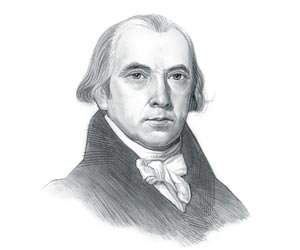|
|
|
|
|
The Cumberland Road was built between 1811-1837 and served as a gateway to the West for thousands of settlers
Cumberland Road
History - The Northwest Territory
The
Cumberland Road History for kids - Purpose of the Cumberland Road
The
Cumberland Road History for kids: The Main Street of America
The
Cumberland Road History for kids: Congress Authorizes Construction of the
Cumberland Road
Cumberland Road History for kids: The General Survey Act
The
History of the Cumberland Road for kids: The 'American System'
Facts about
Construction of the Cumberland Road The Cumberland Road, also called National Road, was built between 1811-1837 stretched for 600 miles On August 24, 1814 the British had entered Washington where they burned the Capitol, the White House, and several other public buildings. The building project took nearly 30 years to complete and stretched for more than 600 miles. It ended in Vandalia, Illinois Congress passed legislation that allocated the sum of $30,000 for the building of the road The first construction contracts for the National Road were awarded in the spring of 1811 Because the road began in Cumberland, it was also called the Cumberland Road. It had to be suitable for heavy wagons, which would have created deep ruts on dirt tracks. It was therefore paved with broken stones that provided a solid foundation The construction method was pioneered by a Scottish engineer called John Loudon MacAdam, hence the name of “macadam” roads. The lowest layer was 12-18 inches deep and consisted of base stones approximately 7 inches in diameter (they had to pass through a ring of that size) . It was 80 feet wide, allowing two wagons to travel side by side. Irish workers were lucky to get paid $6.00 a month for breaking and laying stones. Distances were marked by mile posts. Between 1811 and 1818 mile markers made of stone were placed on the South side at 5 mile intervals. In 1835 the stone mile stones were replaced with cast iron obelisk mile markers that were placed at 1 mile intervals The early pioneers used the mile stones to check their progress. On average 10-15 miles were traveled each day Some people never reached their destination - they set up home en route, many opening taverns, inns and stores. Towns soon sprang up along the route The road reached Columbus in 1833, but by this time, canals were eclipsing roads for federal interest and investment - refer to Erie Canal. Additional connecting routes were added, including the National Pike (connecting Baltimore) and the Washington National Pike (that linked the nation's capital). It crossed the Allegheny Mountains and southwestern Pennsylvania, reaching Wheeling, Virginia on the Ohio River in 1818 By 1820 the construction project had reached Wheeling on the Ohio River providing access to steamboats traveling to Pittsburg, Cincinnati, St. Louis, and New Orleans In 1824 a succession of private turnpikes were completed that connected the National Road (Pike) with Baltimore, Maryland and its port on Chesapeake Bay In 1832 tolls began being charged. Toll-houses were built about every 20 miles - Refer to History of the Turnpikes (Toll Roads) Construction ended in Vandalia, Illinois in 1837 when funding ran out The coming of the railroad made further road building unnecessary and a new form of transportation became available for American citizens |
| US American History |
| 1801-1828: Evolution Era |
|
|
|
|
|
First Published2016-04-19 | |||
|
Updated 2018-01-01 |
Publisher
Siteseen Limited
| ||
|
|

